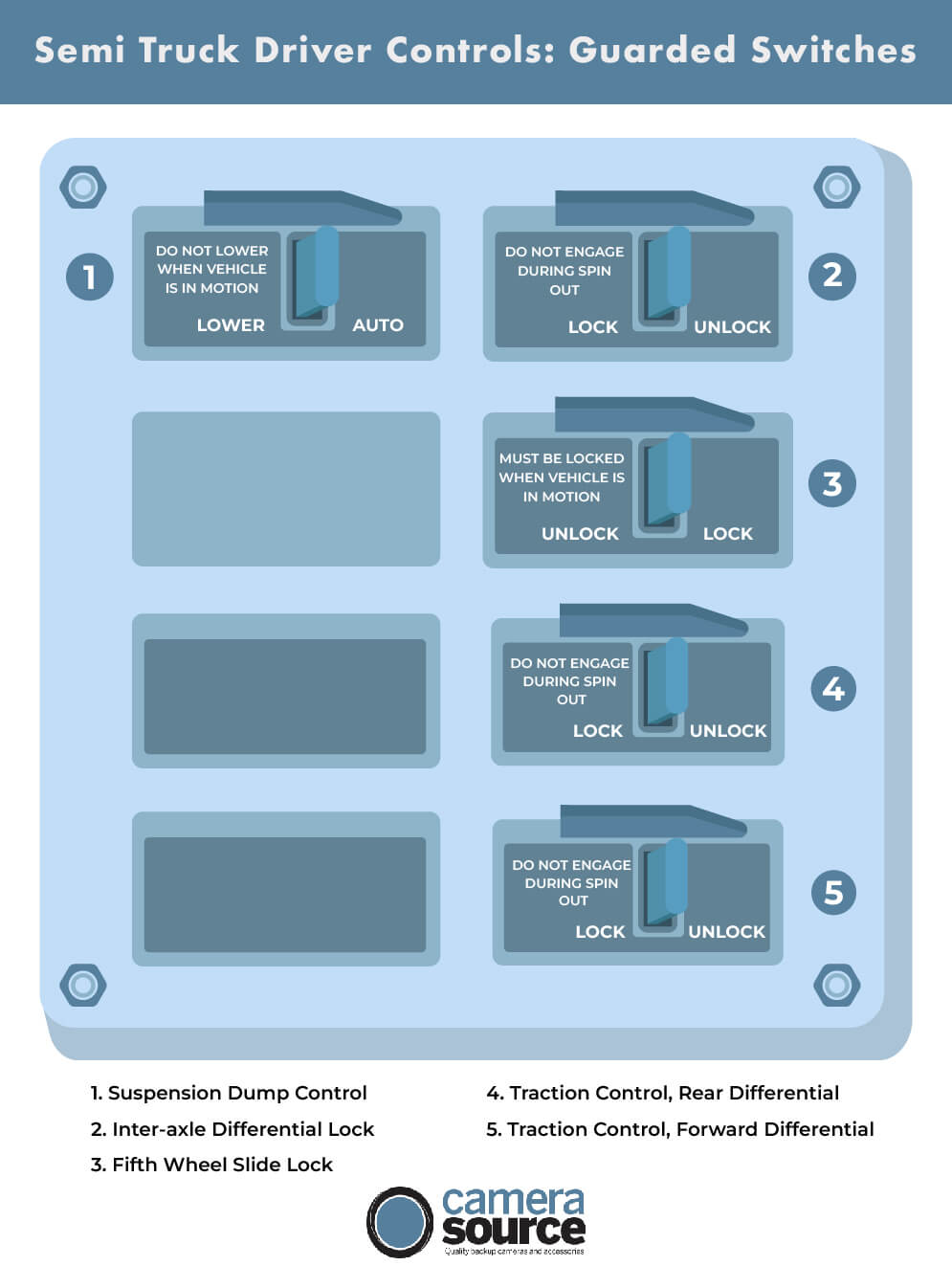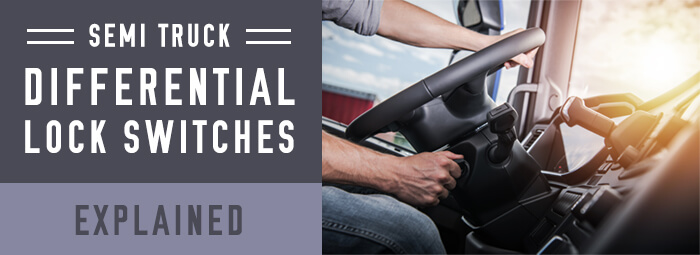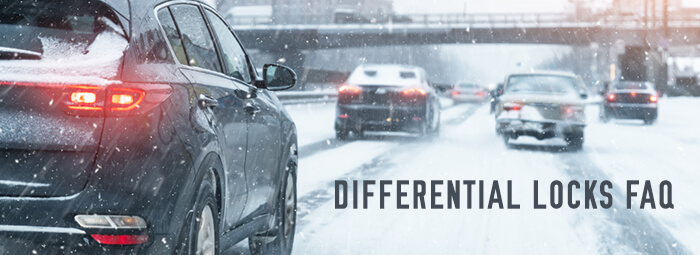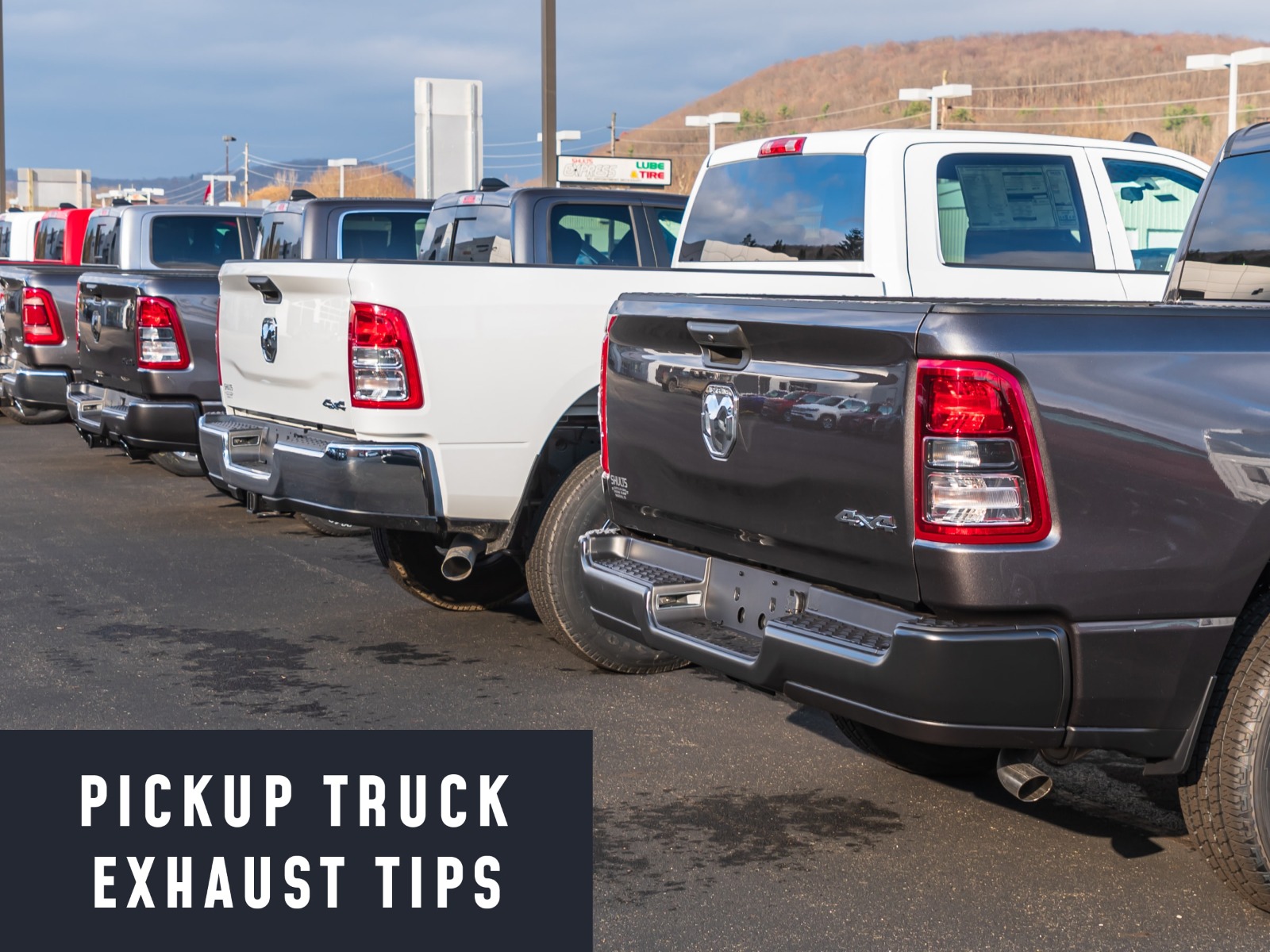If you’ve come across the semi-trailer-truck driver control panel, you may initially be overwhelmed by the number of switches, especially the guarded ones. These switches are often called guarded because they are surrounded by a protective casing that prevents them from accidentally being activated, leading to damages and accidents.
A few of these guarded switches include differential lock switches. Drivers use them to improve their traction when driving in slippery conditions such as snow or ice. They can also help escape a sticky situation, like when you're stuck in mud or sand. Keep reading to find out how they work and when to use them, in addition to other safety features to be aware of while operating on the road.

Types of Differential Lock Switches on Semi-Trailer-Trucks
Differential lock switches are located on the left side of your dashboard, and most have an orange guard around them (similar to those on your wiper controls).
There are three different types of differential lock switches on semi trucks:
1. Inter-axle Differential Lockout Control
This switch is located in the cab of your truck and allows you to change from two-wheel drive to four-wheel drive. When you turn on your truck, this switch is set to "Off." This disables your inter-axle differential lockout control, making it impossible to engage.
2. Traction Control Rear Differential
This switch turns on the rear axle's traction control system. It allows you to drive in the low range and still have traction control active. The traction control will keep the rear wheels from spinning too fast, even when you're in low range and powering up steep hills or pulling a heavy load.
3. Traction Control Forward Differential
This switch activates the forward axle's traction control system. This is especially useful when your truck has an automatic transmission paired with a manual transfer case (like on most Class 8 trucks). When this switch is activated, it allows you to use your manual shift lever just like if you were driving in 2WD mode while having full traction control functionality available to you as well.
What Is an Inter-Axle Differential Lock?
The inter-axle differential lock is a feature on heavy trucks and trailers. It allows the driver to engage one of the rear axle's differentials when driving in slippery conditions. This can improve traction by reducing the power going to spinning wheels.
How Does It Work?
The inter-axle differential lock uses a hydraulic pump that operates a valve in each rear axle. The valves allow fluid to pass through them when they're open, which allows the wheels to turn freely and spin as they usually would. When closed, however, they prevent fluid from passing through and lock the wheels together to turn at the same speed.
When you're going downhill, on a steep hill, one wheel may start spinning faster than the others. This can cause the truck to lose traction and slide sideways — something that can be dangerous if there are other vehicles around. With an inter-axle differential lock installed in your semi-trailer- truck, all four wheels will spin at the same rate no matter how fast they're going down the hill.
When Do You Use It?
You should activate the inter-axle differential lock when driving down steep hills or over rough terrain that might otherwise cause your truck to skid or slide sideways on its own. Its primary function is to prevent those situations by keeping both rear wheels moving consistently and providing additional traction when needed.
When not to use this feature: Do not use this feature if you are driving in deep water where hydroplaning could occur; it could cause loss of control and lead to possible injury or death.
Why Is It Important?
Having an inter-axle differential lock installed on your truck gives you added control over your vehicle's stability while driving downhill or through rough terrain — especially when one wheel starts spinning faster than the others. This can be particularly helpful for drivers who need to traverse steep grades regularly or tow heavy loads in off-road conditions.
In addition to the inter-axle differential lock, a backup camera can be useful in the same situations. Heavy-duty backup cameras can withstand vibrations on rough roads, and trailer backup cameras are helpful for hitching and towing heavy loads in adverse road conditions.
How to Operate Semi Truck Inter-Axle Differential Lockout Control
The inter-axle differential lockout control is used in trucks with air brakes and either automatic or manual transmissions. The differential lockout control allows the driver to lock the rear axles together while braking, which reduces skidding. The system consists of two switches on the dash panel, one for each axle.
The differential lockout control switch is used when a load on one axle can cause skidding. When this occurs, locking both axles together will help prevent skidding.
To operate the inter-axle differential lockout control:
- With your truck in park or neutral and the parking brake engaged, turn the ignition switch button on the switch panel ON (II) until it clicks once. This will activate inter-axle differential lockout control on both axles.
- Push both differential lockout switches simultaneously while braking at a standard rate of speed (15 mph or less). The truck will make noise as if it were in the four-wheel drive but will not move forward or backward when locked.
Why Is It Important?
Differential lockouts prevent one axle from spinning while the other drives the vehicle forward or backward. If one axle were allowed to spin freely while the other drove the vehicle, the vehicle would skid sideways instead of moving forward or backward as intended. This could result in expensive repairs for your vehicle, including damage to its frame, suspension parts, tires, and rims.
How to Operate Controlled Traction Differential Control
The controlled traction differential control is located on the left side of the dash, on the driver's side. To operate it, you will need to use a flat head screwdriver to depress the button located in the center of the control. When you press this button, it will make a clicking sound as it engages.
Once you have pressed this button, you will notice three different modes available for you to choose from. These modes include:
- Lock - This mode locks both wheels together, so they do not spin at different rates. This is commonly used when your truck is stuck in mud or snow and needs extra traction to get out of it.
- Partial Lock - This mode allows for movement between both wheels but does not allow them to spin freely as they would if they were not locked. The partial lock is commonly used when driving on wet roads or when pulling heavy loads that require more traction than just one wheel spinning would offer.
- Open - This mode provides no traction between your front and rear wheels and allows them to spin freely without any interference from each other. Open is commonly used when driving down the highway at speeds over 60 miles per hour.
When To Use It
Controlled Traction Differential Control is useful when you are driving on slippery roads. It can help you avoid accidents and improve your braking performance. You should use it whenever there is snow or ice on the road or if you feel like your vehicle is sliding too much.
The controlled traction differential control allows you to lock the rear axle so that both wheels turn at the same speed. This will improve your vehicle's stability and braking performance. It is also important to note that you can use this feature on all drive modes (traction, snow, mud).
Why It Matters?
The CTD feature allows you to lock both wheels on an axle together and drive straight through slippery, wet, or snowy conditions. This is great for getting through deep snow or mud, but it can cause problems if you are unaware of how it works or when you should use it.
Camera Source for A Safe Drive
Differential lock switches are one of the many safety features truck drivers use to maintain control of their truck adverse road conditions in addition to backup cameras. With these features and knowing when to activate them, you can drive confidently and avoid the dangers of driving in less-than-ideal conditions.
We hope you'll check out our selection of cameras and accessories, or contact us via email or give us a call. If you're ever unsure which camera is suitable for your needs, feel free to chat with one of our expert staff members. We're always happy to help.








